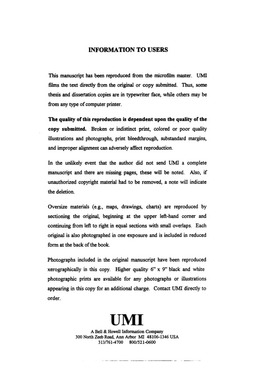| dc.contributor.advisor | Downard, John S., | en_US |
| dc.contributor.author | Kim, Sang-hoon. | en_US |
| dc.date.accessioned | 2013-08-16T12:29:36Z | |
| dc.date.available | 2013-08-16T12:29:36Z | |
| dc.date.issued | 1997 | en_US |
| dc.identifier.uri | https://hdl.handle.net/11244/5470 | |
| dc.description.abstract | Fibrils, an extracellular appendage, are composed of polysaccharide and protein. Regulation of fibril production in M. xanthus was studied. In wild-type cells, fibril production was induced upon the stationary phase and the Ca$\sp{2+}$ addition. Such induction was not observed in the fibril-deficient social motility mutants and Cds mutants. However, normal levels of the phosphoenolpyruvate carboxykinase (Pck) activity in these mutants suggested that the block in fibril biosynthesis in these mutants occurs in the later stages of the gluconeogenesis pathway. Ca$\sp{2+}$-mediated polysaccharide induction was also observed in developmental submerged culture conditions, resulting in cellular aggregation and fruiting body formation. Sr$\sp{2+}$ but not Mg$\sp{2+}$, Mn$\sp{2+}$, Li$\sp{2+}$, or Rb$\sp{2+}$ could substitute for Ca$\sp2$. The stk mutant showed constitutively high levels of polysaccharide and Pck. The double mutants with mutations in the stk locus and in social-motility genes or in the cds loci showed constitutively elevated polysaccharide and Pck activity levels. Two exceptions (stk-dsp and stk-SR200 strains) suggested that the stk allele is hypostatic to the dsp or SR200 allele. DNA sequence analysis of the 3.6-kbp Kpnl-EcoRI DNA fragment which complemented the stk-1907 insertion allele identified two ORFs, 0RF673 and ORF89. Because of the incomplete amino acid sequence of the ORF673 within the fragment, the ORF89 appeared to be a strong candidate for the stk gene. | en_US |
| dc.description.abstract | The highly homologous tps and ops genes are expressed during Myxococcus xanthus development. Activation of tps occurs early in development (5h) while ops activation starts after 40h. Within the region of homology (from $-$50 to ATG codon), there exist 9 mismatched sequences. We investigated the differences in DNA sequence for their roles in differential regulation. The conclusions drawn from this study are: The ops $-$35 region contains an inverted repeat sequence and may mediate repression. The tps sequence at $-$46 and $-$39 was shown to be involved in an early developmental tps induction after 9h. Difference in the $-$10 region did not affect the differential regulation but affected transcription efficiency. Difference in the leader sequence apparently made tps mRNA weaker in translation, possibly due to the formation of a more stable secondary structure. Late developmental. induction of ops appeared to require the region between $-$131 to $-$50. | en_US |
| dc.format.extent | xv, 120 leaves : | en_US |
| dc.subject | Biology, Genetics. | en_US |
| dc.subject | Nucleotide sequence. | en_US |
| dc.subject | Myxococcus xanthus. | en_US |
| dc.subject | Biology, Microbiology. | en_US |
| dc.subject | Gene expression. | en_US |
| dc.subject | Biology, Cell. | en_US |
| dc.subject | Polysaccharides Synthesis. | en_US |
| dc.subject | Biology, Molecular. | en_US |
| dc.title | Studies on the regulation of developmental gene expression and polysaccharide production in Myxococcus xanthus. | en_US |
| dc.type | Thesis | en_US |
| dc.thesis.degree | Ph.D. | en_US |
| dc.thesis.degreeDiscipline | Department of Microbiology and Plant Biology | en_US |
| dc.note | Adviser: John S. Downard. | en_US |
| dc.note | Source: Dissertation Abstracts International, Volume: 58-03, Section: B, page: 1097. | en_US |
| ou.identifier | (UMI)AAI9724426 | en_US |
| ou.group | College of Arts and Sciences::Department of Microbiology and Plant Biology | |
